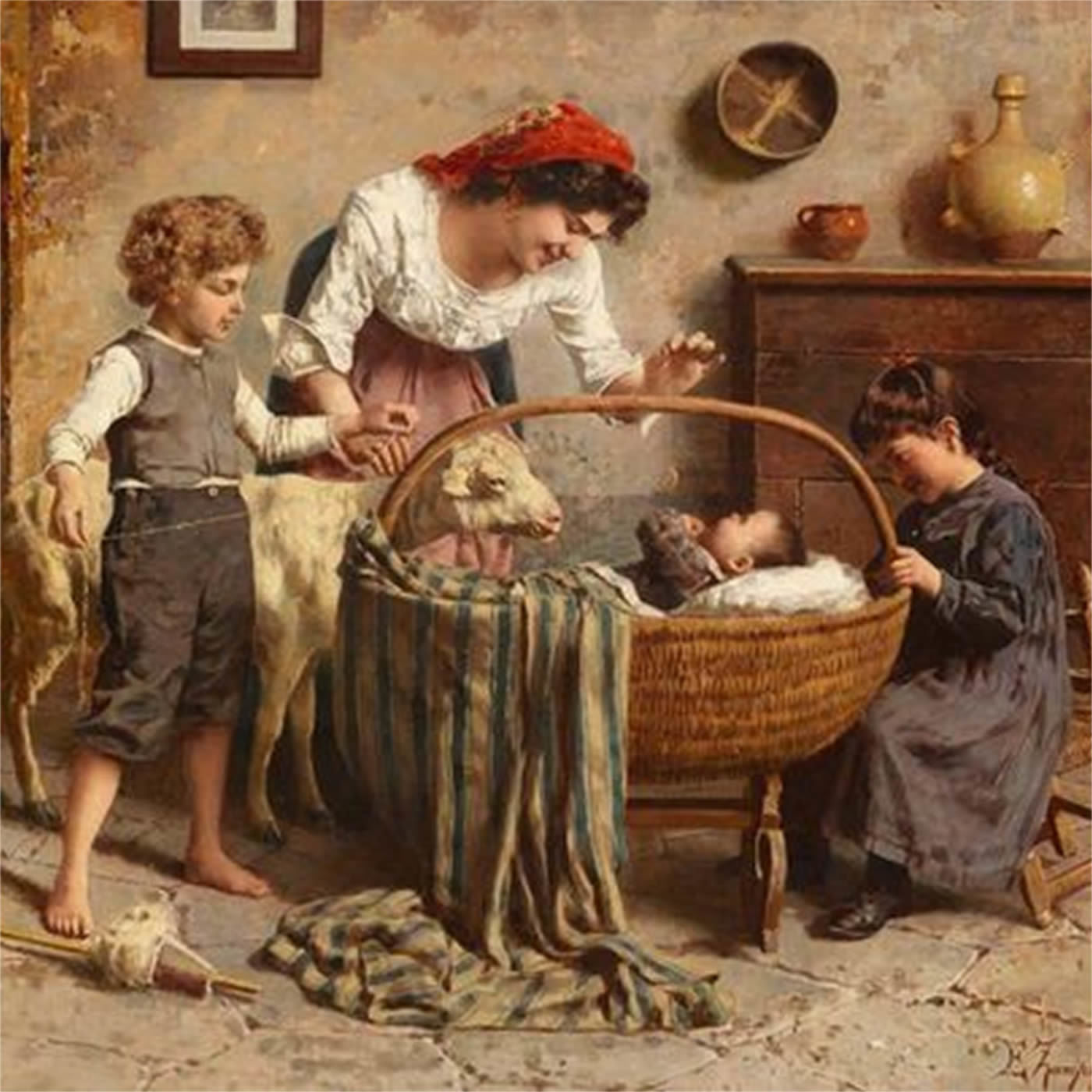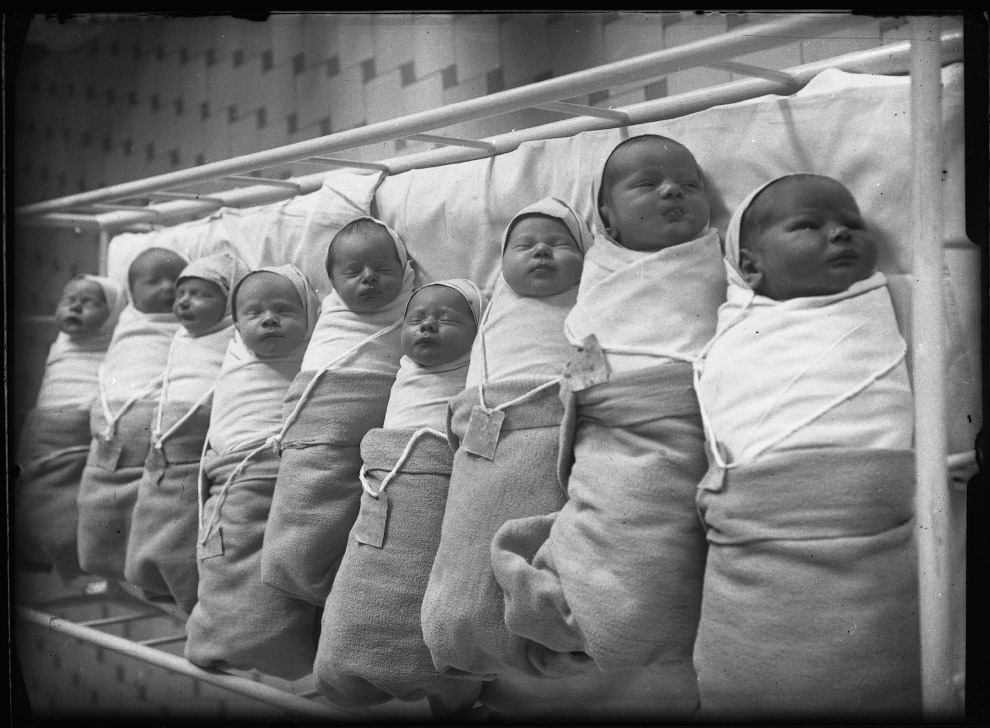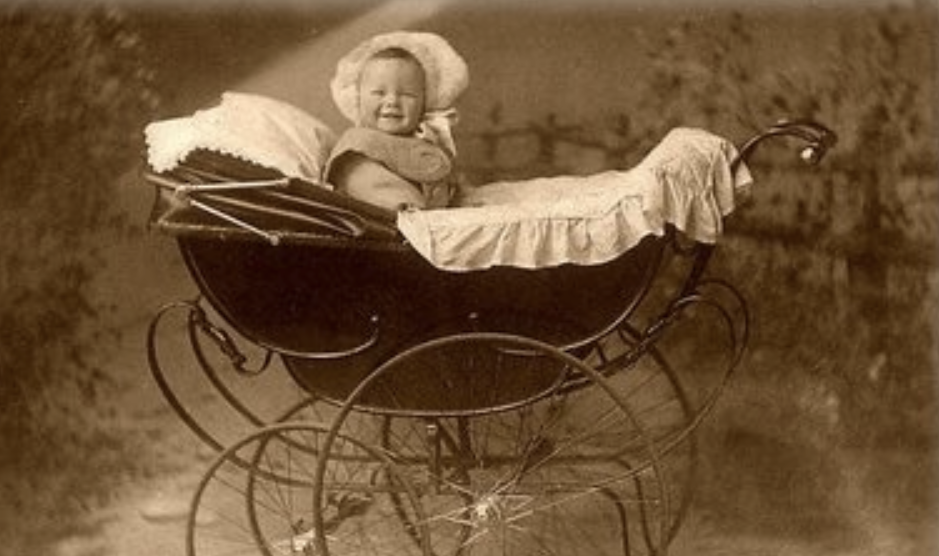
Let me know: are you a girl or a boy?
At the end of the 19th century, when sewing clothes for young children, they paid attention not only to beauty, but also to practicality. Both girls and boys sewed spacious dresses with a low waist. This was due to the fact that the baby was perceived as an unformed and almost asexual creature and treated him like a gentle angel. The lack of panties was very convenient. A child, not yet accustomed to the potty, could independently relieve the need and not get dirty. At that time, fabric was expensive. Such tailoring made it possible to save significantly, as the vest was enough for several years.
Boys before entering the gymnasium were brought up by female governesses and wore women's clothing. When it came time for admission to educational institutions, they sewed trousers. At that time, teachers in gymnasiums were, as a rule, men. The dream of every little boy was to get rid of female guardianship, change dresses for trousers and move to an adult "male" life. Many families held celebrations in honor of the beginning of adolescent life in boys. In Western Europe, dresses for boys and girls were distinguished by the color and density of the fabric. The boys wore brighter or darker shades, the girls were dressed in dresses of discreet tones, and the fabric was thinner.
Modern children are dressed very differently than before. One baby can have a full wardrobe of clothes for every taste. Boys are no longer dressed in girlish dresses, but many girls do not crawl out of their panties.
In pre-revolutionary Russia, only children from aristocratic families were given good upbringing and care. There, the nanny and governess looked after the child, and the mother was engaged in herself.

There was no time to raise children in peasant families; they grew up on their own. At best, an older brother or sister who could barely turn five or six years old could look after them. Older children were already taken to work. Basically, the baby was wrapped in diapers and left alone in the cradle. So that the child could satisfy his hunger, a cow horn cut off at the end was hung over his face.Soaked sweetened bread was laid in it, and the child could suck it at any time. So that by the evening the baby would not be in a puddle of his own urine, a hole was cut in the bottom of the cradle, and excess fluid drained onto the floor. Needless to say, for the lack of running water, washing children every day was an unattainable luxury.
Sterility - First of all
In the 1920s, pregnant women and women in labor began to provide medical assistance and support. Women without children were considered flawed and were almost outcasts of society. Each Soviet girl sought to marry and become a mother of at least two children. The well-known pediatrician G.N. Speransky and doctor of medical sciences V.P. Lebedeva specifically wrote the book of the mother for young parents. Pregnancy and childcare were considered in it no more and less as a civic duty to society. Newborns were treated like crystal vases; when visiting a baby, doctors required surgical sterility and cleanliness. Before the war, lactating mothers wore a white robe and scarf before putting the baby to the chest, and with a cold, they also wore a gauze bandage.
Paying tribute to the pediatricians of that time, it is worth noting that the hygiene of babies is now no worse than then. Modern industry has greatly facilitated the lives of mothers and babies, producing many baby care products. And living conditions have improved significantly.
Swaddling baby yesterday and today
Swaddled babies in the days of Hippocrates. This tradition has survived to this day for a reason. In a newborn baby, the movements of the arms and legs are not yet coordinated, he does not know how to control his body. As a result, the baby may scratch or hit itself. A sharp wave of the handle also scares the baby. The baby, wrapped in a diaper, sleeps calmer and sleep is much longer. In Soviet times, there was a myth that if you swaddle a baby weakly, he will have crooked legs. It is not true. On the contrary, tight swaddling harms the baby: the development of the musculoskeletal system slows down and the sense of touch worsens.

In the 80s, pediatricians decided that it was enough to swaddle only the lower part of the body with the legs. To prevent the child from scratching himself, they cut his nails or put on special gloves. Child psychologists believe that freedom of action directly affects the inner world of the baby, making him confident.
Now only free swaddling is in use, and then it is recommended in rare cases, for example, if the crumb is difficult to fall asleep. Now it is believed that freedom of action (in the literal sense of the word) is reflected in the inner world of the child: he grows more confident. In addition, without diapers, the baby's skin breathes better, and this is a good prevention of diaper rash.
New Book Publishing House
What modern mother does not know the book of the famous American pediatrician B. Spock, “The Child and His Care”? Abroad, this edition appeared in 1946. The author planned to release 10 thousand copies and stop there. In fact, more than 750,000 were sold. In Russia, the book began to be published in the 60s. It was a real revolution in pediatrics.
Previously, they recommended keeping babies in black gloves, and Dr. Spock wrote: “Trust yourself and the child, feed him when he asks, take him in his arms when he cries, give him freedom, respect his personality!” The doctor simply stated his experience, not suspecting that he was making a revolution not only in pediatrics, but also in the minds of Soviet citizens.
A loyal approach to raising children greatly simplified the life of mother and child. Dr. Spock recommended listening to the wishes of the child: to feed when he wants, to pick up, if crying, to respect the personality of the baby. Currently, pediatricians have begun to play down the significance of the book, believing that Spock's practice is outdated. In fact, the recommendations of the doctor have not lost their relevance and can be used in modern parenting.
The history of children's transport
The appearance of the progenitor of a modern stroller dates from 1733. She was interesting in that a pony or dog was used for her movement and the stroller was more like a wagon. The inventor of transport for the baby was the Englishman William Kent. The prototype of the stroller familiar to us was also invented in England. There was opened the first factory engaged in their manufacture.
In 1889, an American William Richardson came up with a transformer stroller. In the improved model, the handle was thrown to the other side, due to which the child could sit both with his back and facing his mother. The first Soviet carriage began to be made in 1949 according to the German model.

Today, strollers are equipped with many additional accessories and functions that you could only dream of before.
History of breastfeeding
In pre-revolutionary times, it was not accepted in aristocratic families that a young mother herself breastfeed a child - it was considered good form to give the child a nurse. In peasant families, children were fed for a long time, because everyone knew that this increases the child's chances of survival. The average duration of feeding ranged from one and a half to two years, but many fed longer.
Usually the principle of “three long posts was used: a woman fed two Big posts and one Assumption, or two Assumption and one Big, on average from 1.5 to 2 years.
In Soviet times, there was an active propaganda of breastfeeding. Doctors recommended applying the baby to the breast exclusively for feeding. Using breasts to calm a baby was forbidden. The child should have eaten no more than 30 minutes so that feeding does not turn into pampering.
In modern pediatrics (WHO) It is recommended to breast-feed a baby up to 6 months, and then begin to gradually introduce complementary foods.
Interesting facts about diapers
When conducting research on manned space flights, Soviet designers simulated the first prototype of a modern diaper.
The first disposable diaper was filled with sawdust. It was invented in the USA in 1956.
The introduction of complementary foods
In the middle of the 20th century, Soviet pediatricians agreed that breast milk contains an insufficient amount of nutrients necessary for the proper development of the baby. In this regard, women were recommended to introduce "complementary foods" in the form of juices and fruit purees. In the postwar years, the standard for feeding children up to a year, developed by the Soviet pediatrician A.F. Tur, was adopted. According to his schedule, up to 5-6 months, the baby should be fed breast milk, then semolina is introduced. In 6-7 months, vegetable and fruit puree is introduced. at 7−8 months - meat broth, at 8−9 months - crackers, cookies and egg yolk, at 9−10 months - minced meat, at 12−14 months - meatballs.
In the 60s, the opinion of experts changed and they decided that supplementary feeding can be introduced at 2-4 months and complementary feeding is necessary at 4-5 months, and children who are being fed, even earlier. Fruit juice could be given 1 teaspoon from 1 month, applesauce from a month and a half. Then cottage cheese (3.5 months), egg yolk (4 months), vegetable puree (4-5 months) were gradually introduced.
Until the early 90s, parents adhered to these rules. Moms fed the kids, and they suffered from colic, stool problems and allergies, and no one could understand why. After numerous studies, pediatricians concluded that everything was to blame for complementary foods, and decided to move on to the standards developed by A.F. Tur. Currently, the timing of the introduction of complementary foods is again in line with the standards of the 1940-50s. The first lure is introduced from 4.5 months. children on artificial feeding, from 5 months. - on the chest. Up to 5 months It is not recommended to introduce supplementary foods (juices and fruit purees). For children with digestive tract problems and other diseases, an individual scheme is selected.
READ ALSO:








